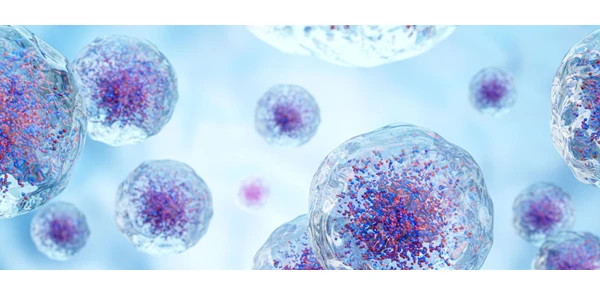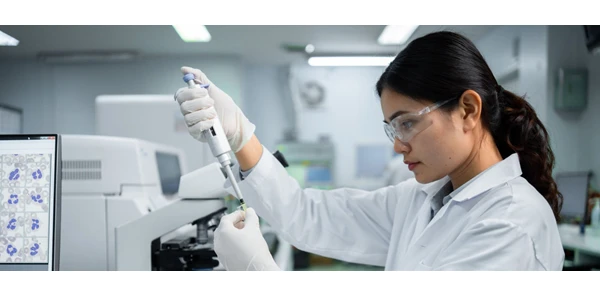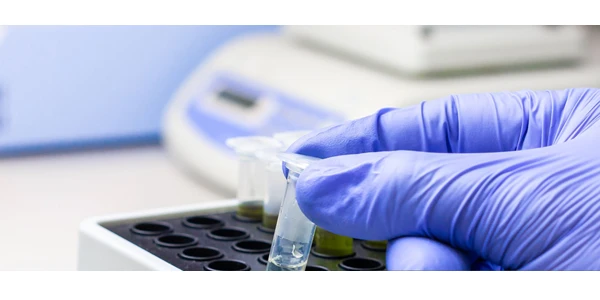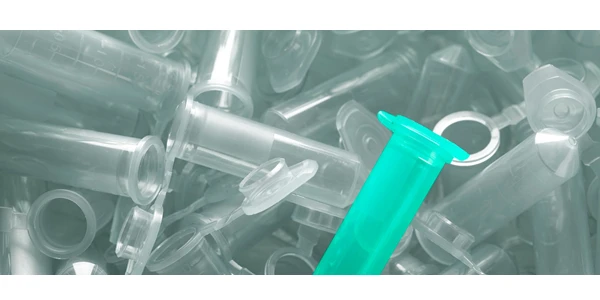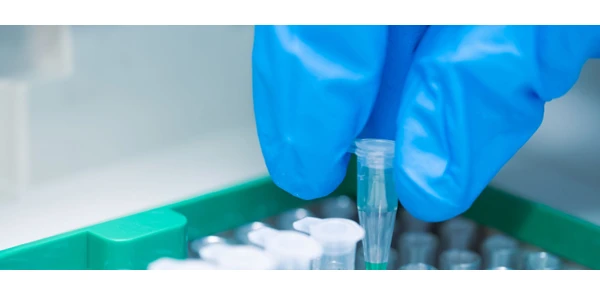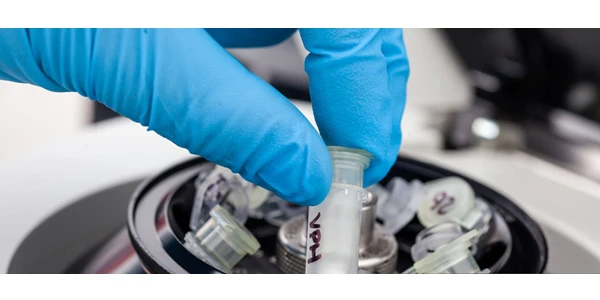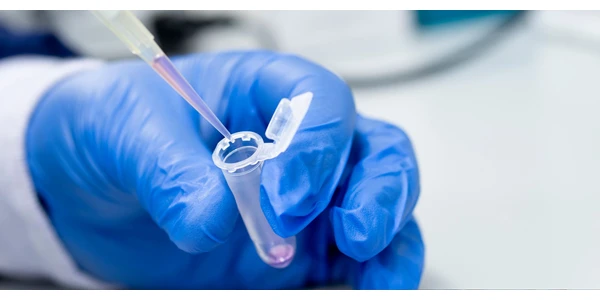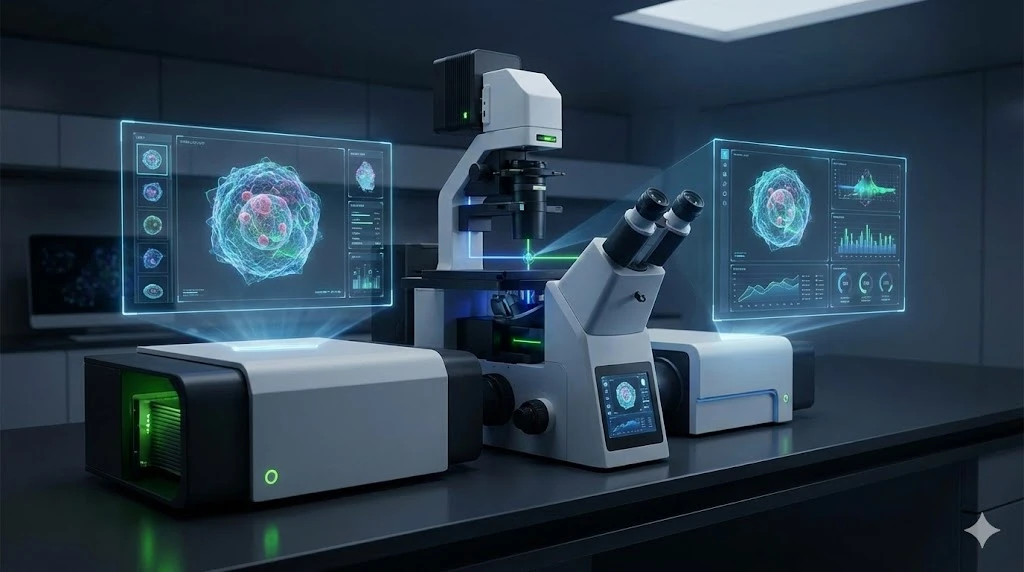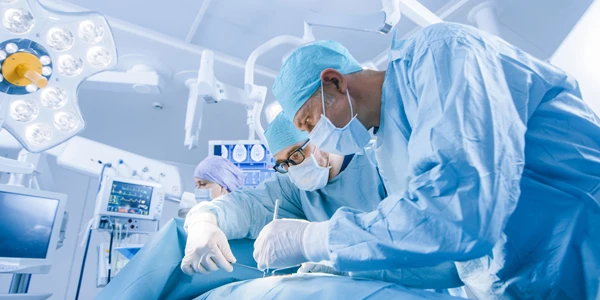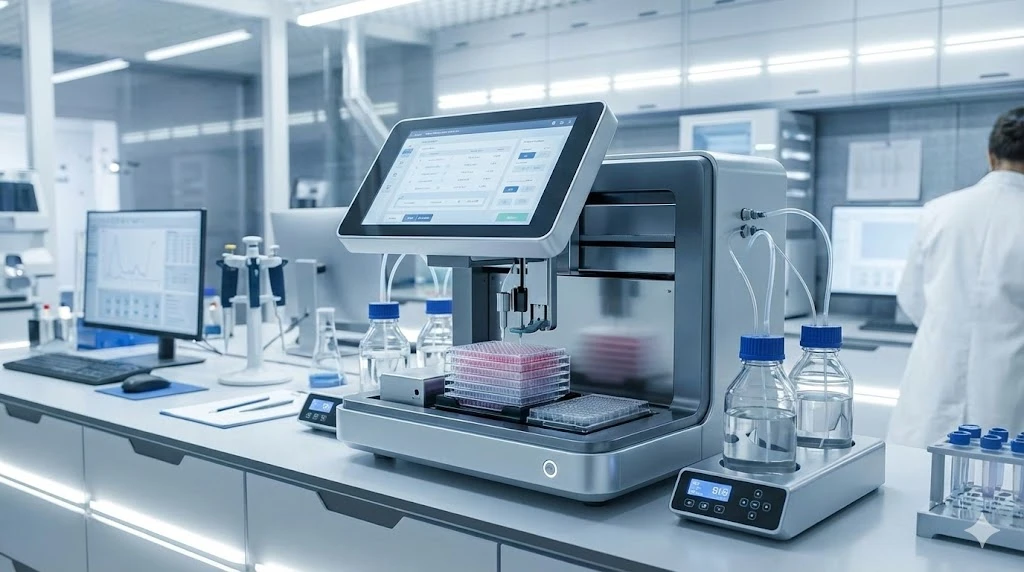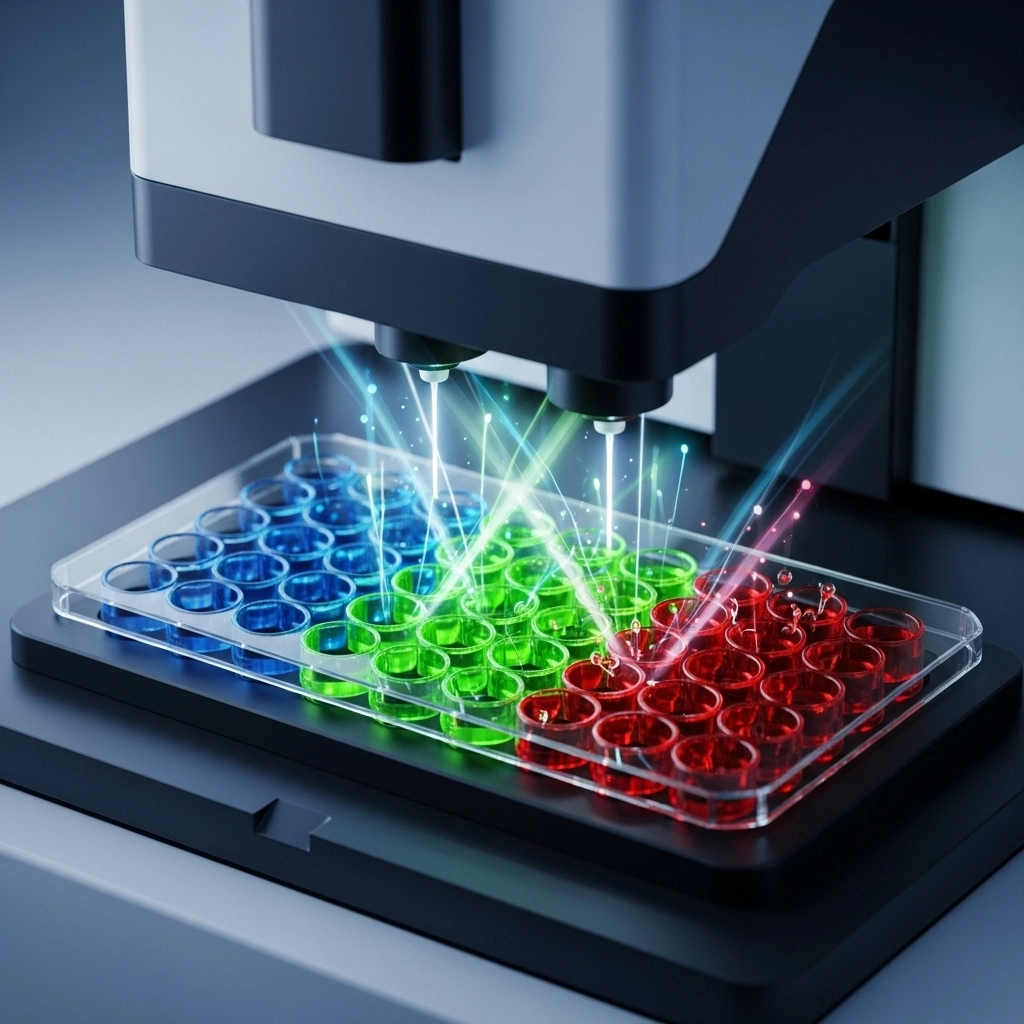
ImageFX (2025)
Accurate quantification of DNA, RNA, and protein is essential to nearly every molecular biology workflow. Traditionally, this required large sample volumes, dilution steps, and the use of benchtop UV/Vis spectrophotometers. With the introduction of Nanodrop technology, labs have transitioned to a faster, more efficient, and sample-conserving method for absorbance-based analysis.
Whether you're new to the technology or looking to optimize your workflow, this guide covers everything you need to know about Nanodrop instruments, including how they work, best practices, and model comparisons.
What is Nanodrop and How Does It Work for DNA, RNA, and Protein Quantification?
Nanodrop is a microvolume spectrophotometer that allows for the rapid measurement of nucleic acid and protein concentrations using minimal sample volumes. Its patented sample retention system leverages surface tension to hold a droplet of liquid between two optical fibers without the need for cuvettes.
Key Technical Specifications:
| Feature | Specification |
|---|---|
| Minimum Sample Size | 0.5 µL |
| Wavelength Range | 190-840 nm |
| Wavelength Accuracy | ±1 nm |
| Detection Limit (dsDNA) | 2 ng/µL |
| Maximum Concentration (dsDNA) | 15,000 ng/µL |
Step-by-Step Guide: How to Use a Nanodrop Spectrophotometer
Sample Loading:
Pipette 1-2 µL of your sample directly onto the lower measurement pedestal.
For highly concentrated samples or A280 readings, volumes as low as 0.5 µL may suffice.
Optical Pathway Formation:
The upper fiber optic arm is lowered to make contact with the droplet.
Surface tension retains the sample between the two optical fibers.
Measurement:
A pulsed xenon flash lamp emits UV/Vis light through the sample.
A CCD array detects the absorbance spectrum, providing real-time data.
Data Output:
Results are displayed via integrated software on a connected PC.
Software calculates concentration, purity ratios, and more.
Best Practices for Accurate Nanodrop Readings in the Lab
To ensure reliable and reproducible results, consider the following tips:
Use Precision Pipettes: Small volume inaccuracies can drastically affect results. Calibrated pipettes and high-quality tips are essential.
Maintain Surface Tension:
Avoid excessive buffer or salt content, which may disrupt hydrogen bonding.
Adjust sample volume as needed to ensure a stable droplet.
Clean Pedestals Between Reads:
Wipe with lint-free tissue and distilled water or ethanol.
Prevent cross-contamination and buildup.
Nanodrop Model Comparison: 2000 vs 2000c vs 8000
| Model | Key Feature | Ideal For |
| Nanodrop 2000 | Droplet-based quantification | General lab use, minimal volume needs |
| Nanodrop 2000c | Cuvette compatibility (10-48 mm pathlength) | Labs preferring cuvette-based analysis |
| Nanodrop 8000 | 8-sample throughput capability | High-throughput workflows |
Each model retains the core benefits of Nanodrop technology but caters to different user needs. The 8000 model, for instance, is well-suited to labs needing rapid quantification across multiple samples.
Why Choose Nanodrop? Benefits for DNA, RNA, and Protein Quantification
Nanodrop has become a staple in modern laboratories thanks to its numerous advantages:
Minimal Sample Consumption: Use as little as 0.5 µL, preserving precious or limited material.
No Dilution Required: Measure highly concentrated samples directly.
Rapid Results: Obtain concentration and purity readings in seconds.
High Accuracy and Reproducibility: Trusted by researchers globally for downstream reliability.
Space-Saving Design: Compact instrument footprint ideal for crowded benchtops.
Final Thoughts on Nanodrop: A Trusted Tool in Molecular Research
While it may not be fair to call it a "game changer," Nanodrop technology has certainly redefined expectations for routine sample quantification. Its ease-of-use, precision, and efficiency have made it a trusted staple in research settings worldwide.
Ready to upgrade or add a Nanodrop to your lab? Explore new and used Nanodrop models on LabX and discover the best deals for your research needs.
Frequently Asked Questions About Nanodrop Spectrophotometers
1. What is the minimum sample volume required for Nanodrop?
Nanodrop requires as little as 0.5 µL of sample, making it ideal for conserving precious DNA, RNA, or protein materials.
2. Can Nanodrop measure protein concentration accurately?
Yes, Nanodrop can accurately quantify protein concentrations using absorbance at 280 nm (A280) or colorimetric assays supported by the software.
3. How do I clean the Nanodrop pedestals between samples?
Wipe the pedestals with a lint-free tissue moistened with distilled water or 70% ethanol to prevent cross-contamination and ensure accuracy.
4. What's the difference between the Nanodrop 2000 and 2000c models?
The 2000c model includes cuvette compatibility in addition to microvolume capability, offering more flexibility for labs using various sample formats.

